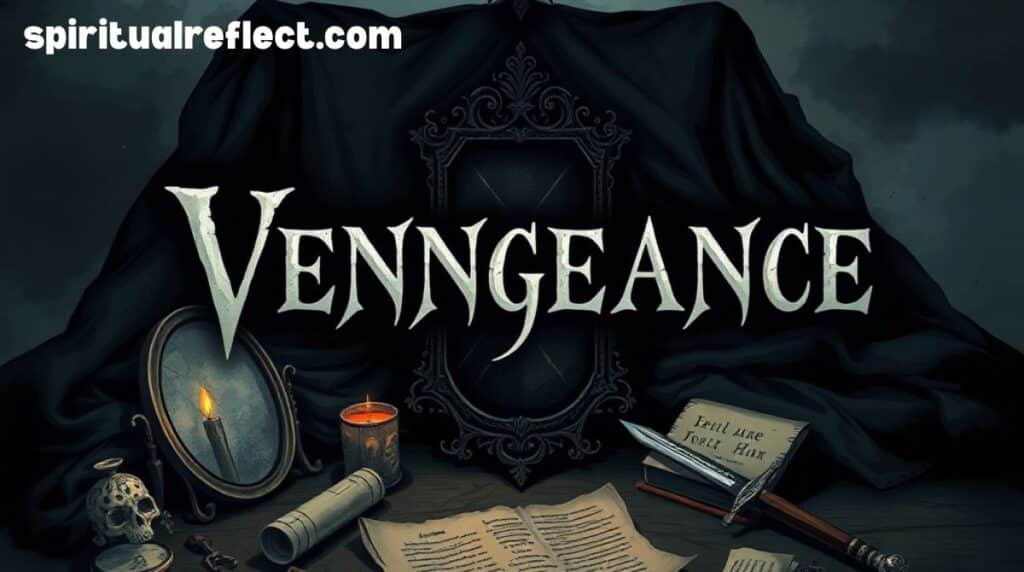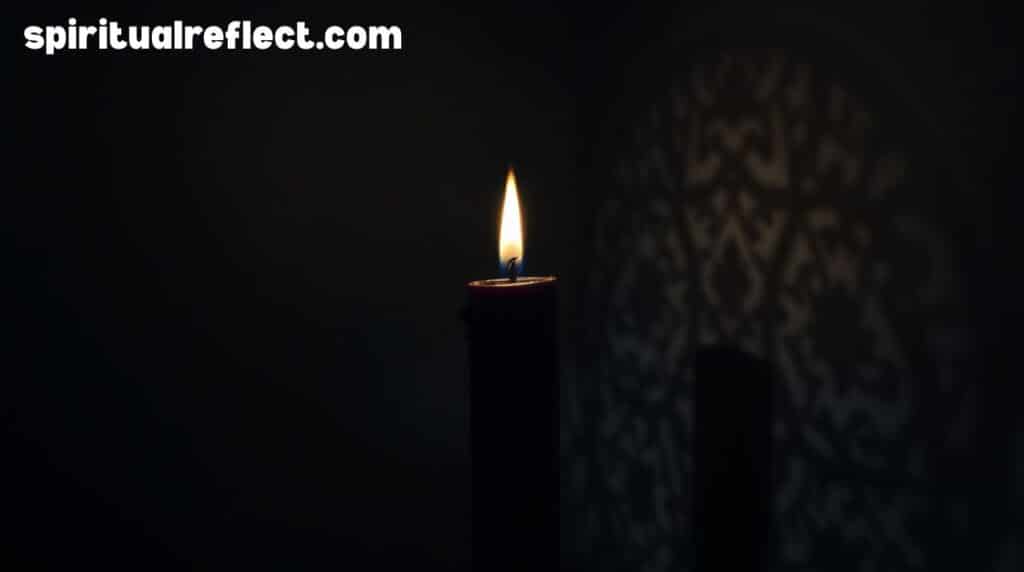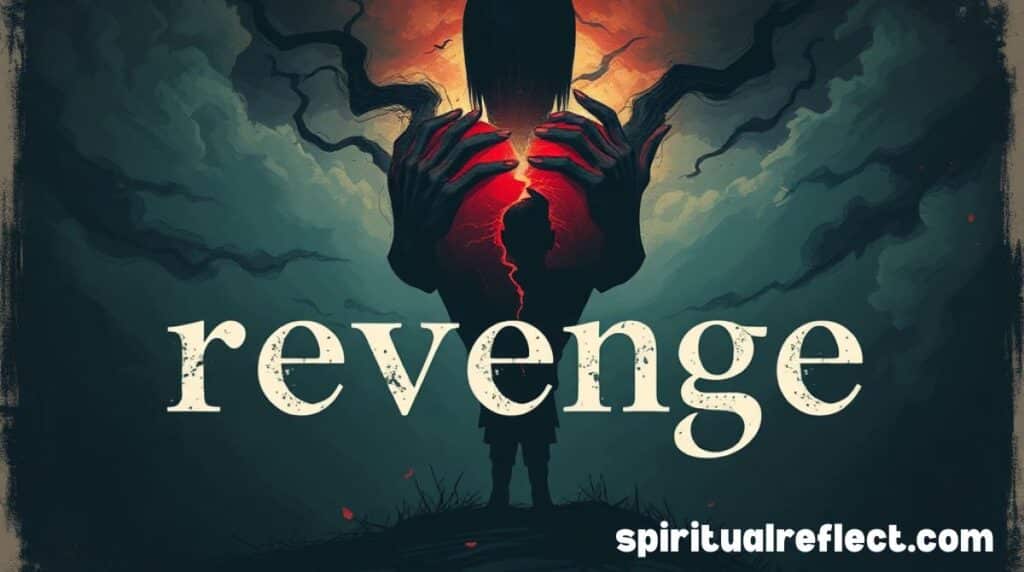Revenge is the act of hurting someone in return for the pain they caused. It comes from strong feelings like anger, betrayal, or injustice. People often turn to revenge when they feel powerless or deeply hurt. It has been part of human behavior for thousands of years, crossing all cultures and times.
There’s a strong force behind revenge that grabs people’s attention. It turns weakness into power and silence into action. Stories built around revenge often stir emotions and keep people interested. Whether in old legends or modern movies, revenge never loses its impact.
More than just a reaction, revenge can be a form of expression. Through symbols, plants, and rituals, people have given meaning to their pain. These ways offer a safer outlet for strong emotions. That’s why revenge remains such a powerful and lasting idea in human life.
The Psychology Behind Symbols of Vengeance
Vengeance isn’t just about retaliation. It’s about emotional release, reclaiming power, and restoring balance. Symbolism helps process these feelings without necessarily acting on them.
“Symbolic action can act as a psychological proxy for real-world revenge, offering catharsis without consequence.”
These symbols serve as tools for empowerment or warning signs to others. In rituals, they externalize inner rage. In literature, they mark a character’s moral descent or righteous anger.
Physical Objects as Symbols of Vengeance

Some objects have consistently been associated with vengeance due to their appearance in rituals, myths, and folklore. Let’s explore the most potent ones.
Coffin
A coffin represents finality, death, and closure. It frequently appears in occult rituals involving symbolic justice or “death” to relationships, memories, or curses.
Symbolism:
- End of a connection
- Spiritual burial of resentment
- Closure after betrayal
Cultural Example: In Victorian England, placing a nail into a miniature coffin was thought to bring death to one’s enemies symbolically.
Broken Mirror

A broken mirror isn’t just bad luck; it represents the shattering of identity and trust. This makes it a fitting symbol in revenge rituals and dramatic storytelling.
Meanings:
- Fractured relationships
- Destroyed illusions
- Long-lasting consequences (7 years’ bad luck lore)
Voodoo Doll
The voodoo doll may be the most recognized of all symbols of revenge, but its origin is often misunderstood. It’s rooted in West African Vodun and Haitian Vodou, where dolls are typically used for healing, protection, and communication with spirits
used for revenge:
- Pins are stuck to transfer pain or pressure
- Cloth items (hair, clothing) connect it to the target
- Rituals may involve fire, burial, or immersion in water
Important: The idea of revenge via voodoo is a Western media distortion of a deeply spiritual and respectful practice.
Dagger
A dagger is swift, silent, and deadly—a weapon made for betrayal. In revenge narratives, it’s a symbol of personal justice and direct action.
Symbolic Uses:
- Cutting emotional ties
- Delivering karmic justice
- Channeling anger in rituals
Case Study: The assassination of Julius Caesar was the ultimate act of betrayal. His daggered death became a historical archetype of vengeance by friends turned foes.
Skull
Skull is universally tied to death, but in revenge symbolism, it goes deeper. It warns of consequences, inevitability, and the karmic circle.
Common Uses:
- Graveyard spells
- Death curses
- Alchemical symbols of transformation via pain
Black Candle

In occult rituals, a black candle absorbs negativity, banishes enemies, and severs spiritual ties.
Uses in Revenge Work:
- Burned with the target’s name inscribed
- Used in binding or reversal spells
- Represents the death of toxicity
| Symbolic Function | Meaning |
|---|---|
| Absorption | Taking in bad energy |
| Banishing | Removal of enemies |
| Death | Ending a situation |
The Letter V
Thanks to V for Vendetta, the Letter V has become a cultural shorthand for vendetta and revolution.
Interpretations:
- Vengeance
- Victory over oppression
- Violence as justice
It’s now used as an icon of retaliation in art, graffiti, and protest.
Poison

THE Poison is the secretive weapon of revenge throughout history—a method chosen for its stealth and deniability.
Infamous Example:
Symbolic Layer:
- Feminine vengeance
- Control through subtlety
- Hidden rage made fatal
Five of Swords (Tarot)
In Tarot, the Five of Swords represents a hollow victory, conflict, and betrayal.
Symbolic Reading:
- Walking away vs. doubling down
- The aftermath of selfish triumph
This card is used in revenge rituals to visualize karmic return or to meditate on letting go of toxic revenge cycles.
Floral Symbols of Revenge
Not all symbols of vengeance are sharp or dark. Some bloom.
Flowers That Represent Revenge and Betrayal
| Flower | Meaning | Historical Context |
| Red Poppy | Blood, sacrifice, lingering grudges | Used in wartime remembrance and loss |
| Oleander | Beauty with toxicity | Poison used historically in the Middle East |
| Buttercup | Falsehood and betrayal | Folklore: Holding it shows deceit |
| Black Dahlia | Mystery, unsolved rage | Named after the famous unsolved murder |
These flowers, often given with subtle malice, represent emotional betrayal or a beautiful mask hiding poison.
Revenge in Plants: Nature’s Quiet Killers
Nature is full of silent assassins. Some plants evolve to defend themselves, while others just destroy what surrounds them.
Poisonous Plants Symbolizing Revenge
- Aconitum (Wolfsbane): Used in ancient poisonings, symbolizes lethal beauty
- Belladonna (Deadly Nightshade): Linked to witchcraft and vengeful seduction
- Hemlock: Execution drink of Socrates, a symbol of state-enforced revenge
Invasive Plants as Metaphors for Revenge
- Kudzu: Smothers and overtakes native plants
- Poison Ivy: Subtle yet relentless irritation
These plants reflect natural symbolism tied to revenge: calculated, invasive, and persistent.
Animal Symbols of Revenge
Certain animals carry meanings that connect deeply to hostility, vengeance, and retribution.
| Animal | Symbolism | Mythology / Cultural Use |
| Snake | Patience, silent retaliation | Seen as a revenger in Greek myths |
| Scorpion | Fatal touch, hidden danger | Zodiac sign Scorpio tied to revenge |
| Raven | Messenger of death, karmic justice | Norse god Odin’s companion |
| Spider | Web of deceit, patient revenge | Anansi tales from African folklore |
| Black Cat | Supernatural warning, independence | Familiars in revenge spells |
| Wolf | Zodiac sign Scorpio is tied to revenge | Native American vengeance legends |
These animal metaphors for retaliation show how instinctual and archetypal revenge can be.
Revenge in Mythology, Literature, and Pop Culture
Revenge has shaped some of the most powerful stories ever told:
Classic Examples
- Medea (Greek Mythology): Murders her own children to punish her unfaithful husband
- Hamlet (Shakespeare): Avenge his father’s death, losing himself in the process
- The Count of Monte Cristo: Patient, cold-blooded retribution after wrongful imprisonment
Modern Stories
- V for Vendetta: Anonymous vengeance against tyranny
- Kill Bill: Bloody retribution led by betrayal and survival
- Attack on Titan / Tokyo Ghoul: Anime revenge arcs powered by trauma and justice
These stories show that revenge is often a moral grey zone: thrilling, yet destructive.
Rituals and Modern Symbolic Acts of Vengeance
Even today, people turn to symbolic acts when seeking closure:
Common Rituals:
- Burning letters/photos
- Freezing someone’s name in water to “ice them out”
- Breaking objects tied to the person
Important Note: Ethical spellwork often favors binding, banishment, or karma return over direct harm.
The Fine Line Between Vengeance and Justice
Sometimes, Vengeance looks like justice. Other times, it leads to a spiral of pain.
“Before you embark on a journey of revenge, dig two graves.” – Confucius
Considerations:
- Is it about righting a wrong or nursing a wound?
- Does symbolic offer peace, or fuel obsession?
Conclusion
Revenge is a deep and personal feeling that comes from pain or betrayal. It often pushes people to act in ways they wouldn’t normally choose. The symbols of revenge—like broken mirrors, poison, or voodoo dolls—help express these strong emotions without using words. They show how powerful and lasting the desire for payback can be.
Even though revenge can feel right in the moment, it doesn’t always bring peace. It can create more problems or hurt people even more. Sometimes, showing strength means letting go. But symbolically using Vengeance—through art, rituals, or stories—can help release anger safely. Understanding the meaning behind Vengeance helps us handle it better and learn from it. life.

Rana Ahmad is the creator of Spiritual Reflect, where she shares insights on personal growth, mindfulness, and meaningful living to inspire a more intentional life.







